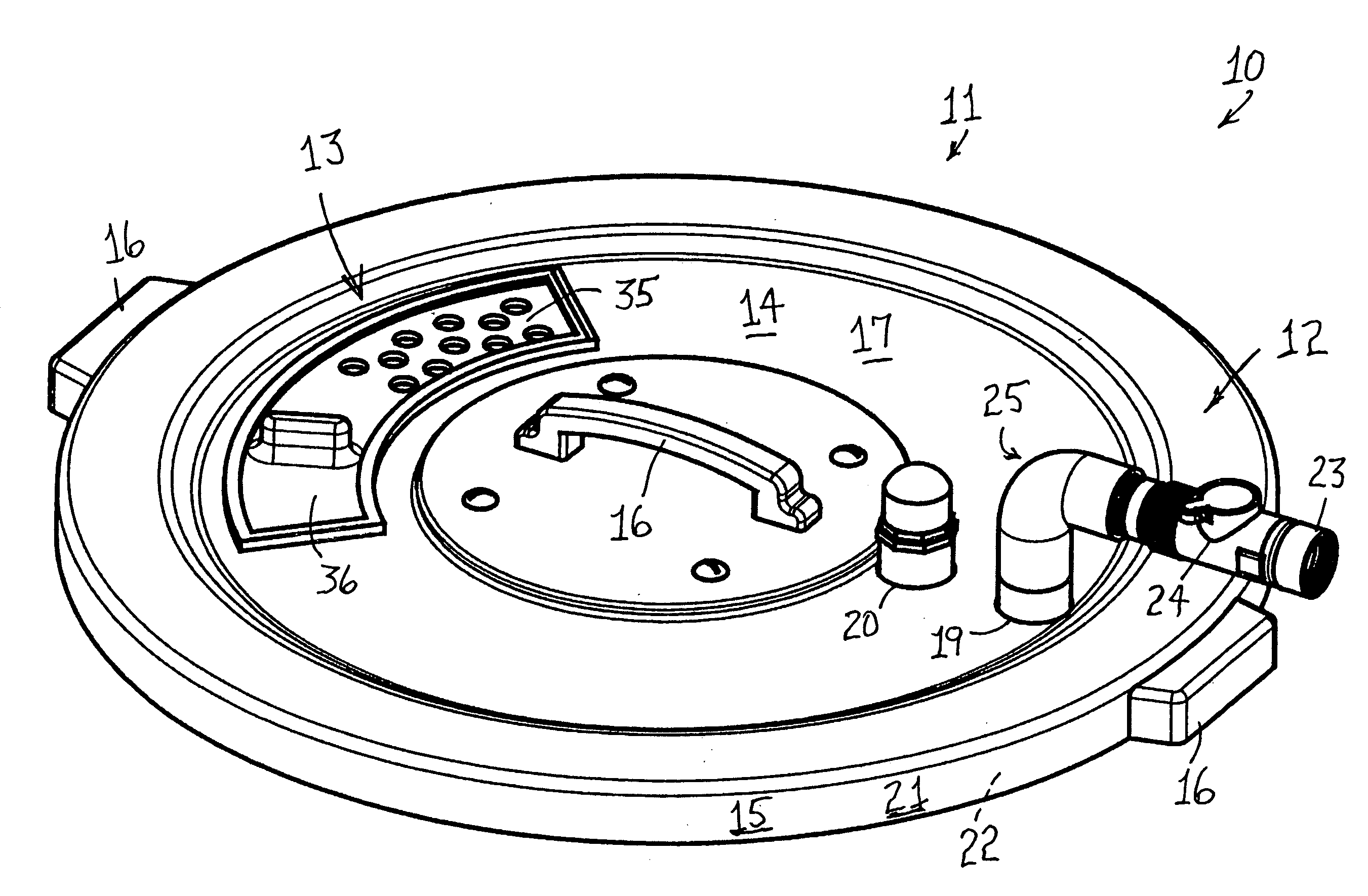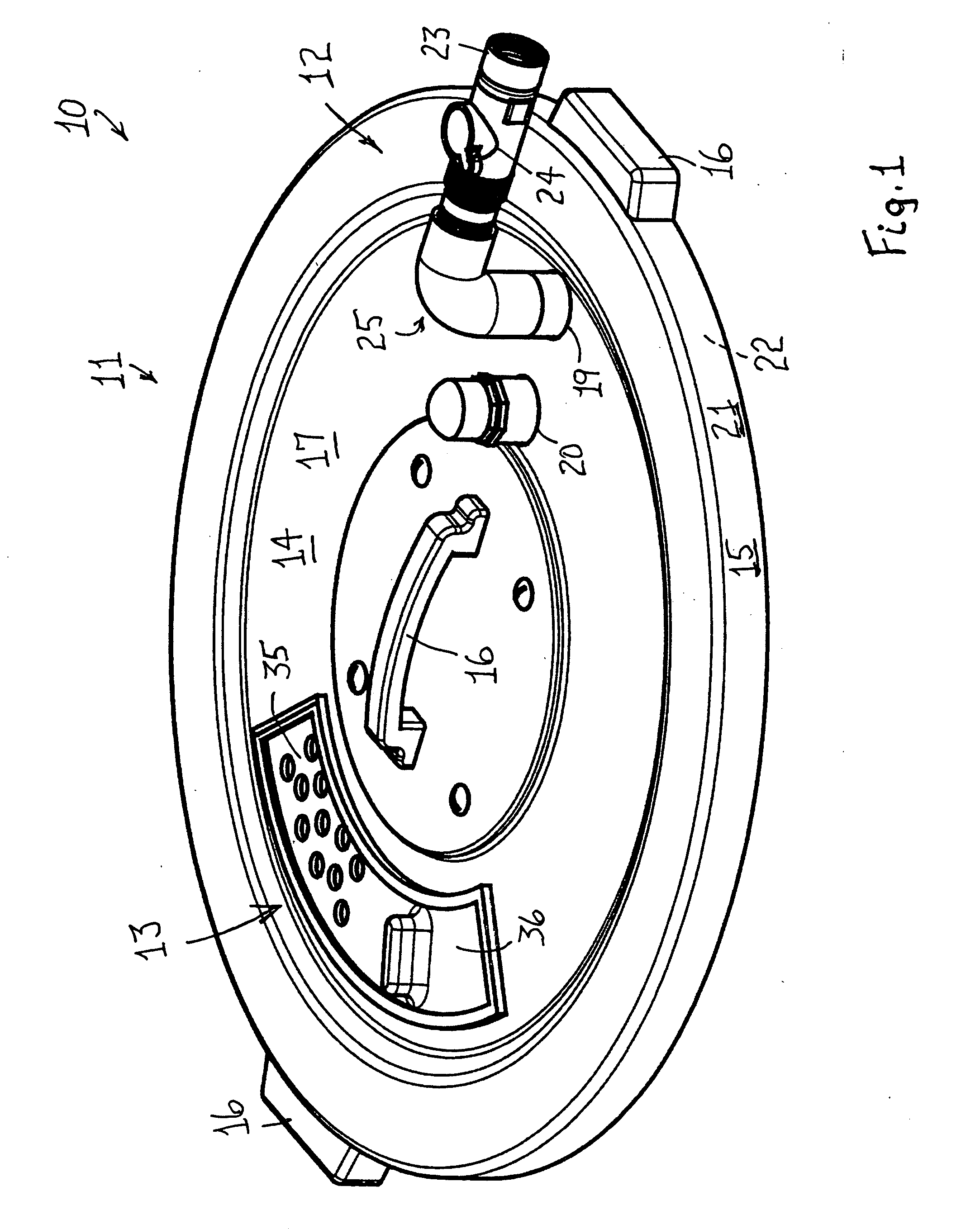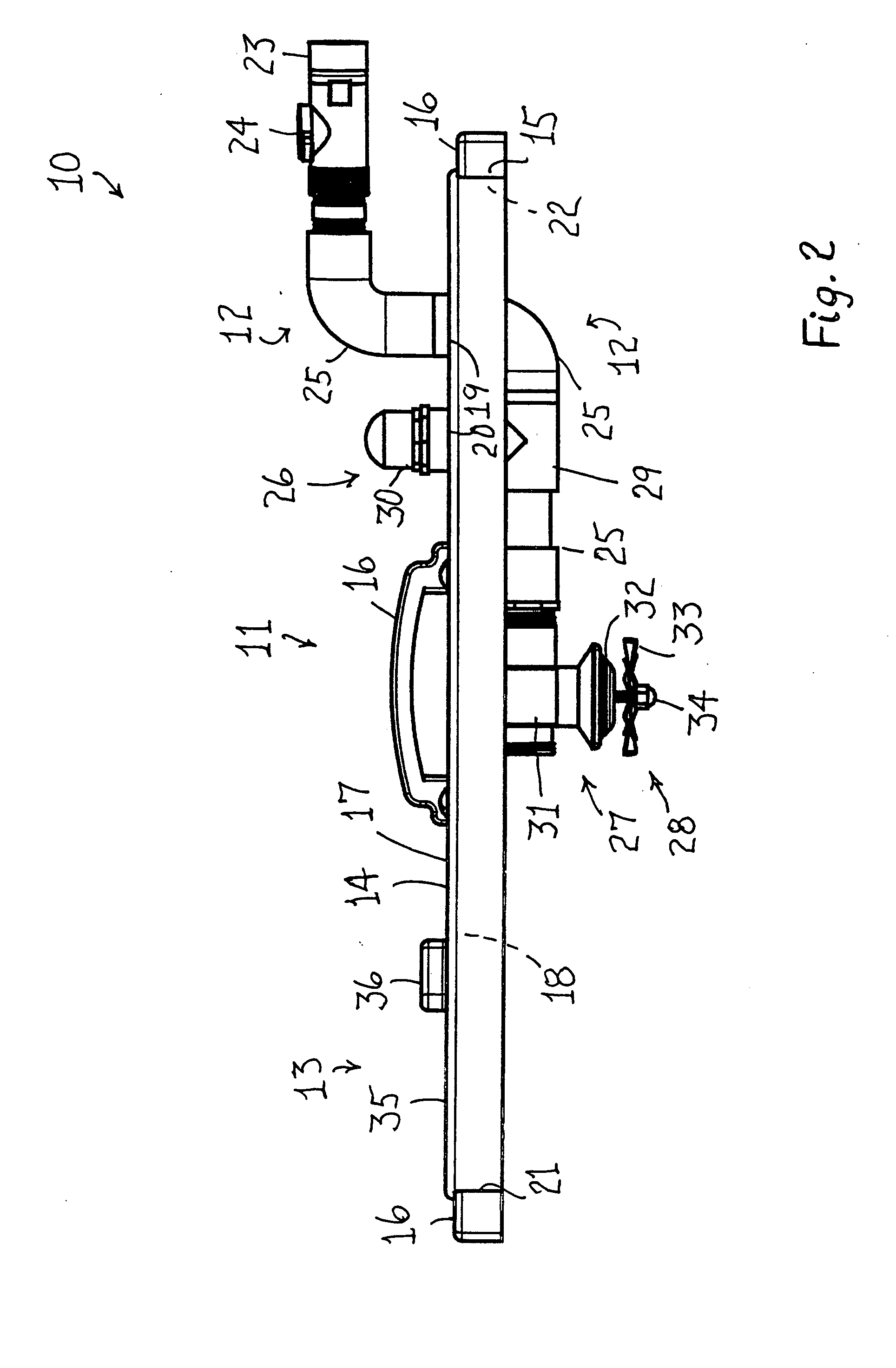Trash can cleaning lid
a technology for cleaning lids and trash cans, which is applied in the field of trash can cleaning lids, can solve the problems of waste accumulation, unsanitary methods, and the cleaning of trash cans, and achieve the effects of convenient operation, low maintenance, and low cos
- Summary
- Abstract
- Description
- Claims
- Application Information
AI Technical Summary
Benefits of technology
Problems solved by technology
Method used
Image
Examples
Embodiment Construction
[0026]Referring to FIGS. 1-3, a trash can cleaning lid according to the preferred embodiment of the present invention 10 comprises a basic lid 11, a plurality of cleaning mechanicals 12, and a debris strainer 13.
[0027]The basic lid 11 is a conventional trash can lid comprising a disk-shaped top mantle 14 from which downwardly depends a short vertical cylindrical side flange 15, and further comprising one or more handles 16 which may be attached to either the top mantle 14 or the side flange 15. The top mantle 14 has an upper surface 17 and an under surface 18, which two surfaces communicate through two round apertures: a water aperture 19 and a cleanser aperture 20. The side flange 15 has an exterior surface 21 and an interior surface 22, the latter of which can optionally have one or more treads or ridges designed to cooperate with corresponding structures on the outer rim of the trash can (not shown).
[0028]The cleaning mechanicals 12 comprise a hose coupling 23, a shut-off valve 2...
PUM
 Login to View More
Login to View More Abstract
Description
Claims
Application Information
 Login to View More
Login to View More - R&D
- Intellectual Property
- Life Sciences
- Materials
- Tech Scout
- Unparalleled Data Quality
- Higher Quality Content
- 60% Fewer Hallucinations
Browse by: Latest US Patents, China's latest patents, Technical Efficacy Thesaurus, Application Domain, Technology Topic, Popular Technical Reports.
© 2025 PatSnap. All rights reserved.Legal|Privacy policy|Modern Slavery Act Transparency Statement|Sitemap|About US| Contact US: help@patsnap.com



